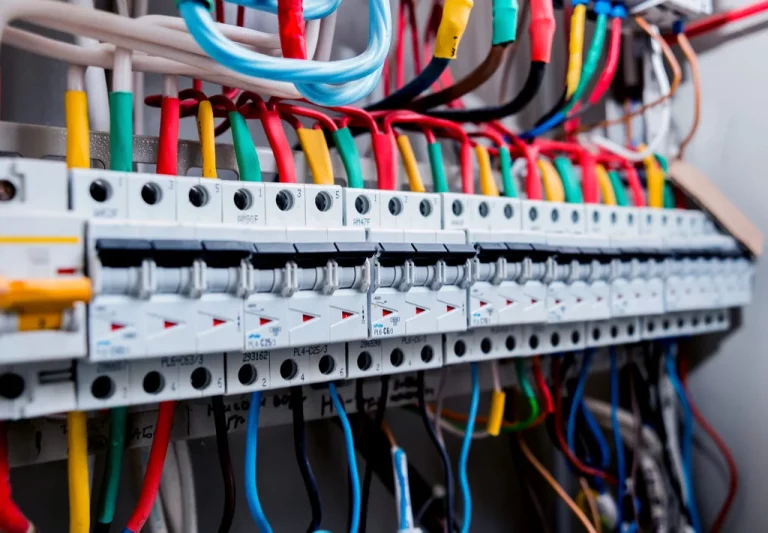Key differences in Cost estimating for residential and commercial electrical projects
The demand for experts in Electrical Cost Estimating Projects is getting higher as there is a potential growth of 8% through 2029. It is a trait that ensures stability in a project. There is a considerable amount of overlap if we compare residential and commercial. However, one key element that influences almost all of the other factors is the size of the project. Also, experts dealing in Commercial projects can also undertake residential projects.
LOOK OUT FOR THE KEY VARIATIONS FOR RESIDENTIAL AND COMMERCIAL ELECTRICAL COST ESTIMATING PROJECTS AND OBTAIN ALL THE NECESSARY INFORMATION TO MAKE INFORMED DECISIONS.
How Cost is interpreted in Electrical Estimating for Residential projects
Residential estimators as the name suggests mostly work in a single-family project. Their services may include :
– Installation of wiring and services
– Repair and maintenance
– Installation of a single-face metre
– Computing the costs of all of the above
One of the responsibilities of Electrical Estimating for Residential Projects experts is to interpret electrical plans. By doing this, they will then develop a budget and create estimates. They work with those products that are specifically allowed for residential-level projects. This is because of the International Building Codes (IBC) guidelines.
Cost interpretation in Electrical Estimating for commercial projects
Electrical Estimating for Commercial projects, product requirements are different as compared to residential. This is because, in commercial projects, the voltage is much higher. Therefore, product quantity and quality differ a lot. As per the National Electric Code (NEC), standards must be followed.
Key differences in Residential and Commercial Cost Estimating
In Electrical Cost Estimating Projects for residential and commercial, one major difference always stands out. That is the the required energy of these projects which is :
Residential Projects
Usually a 1-phase power with a voltage level of 120V – 240V
Commercial Projects
A 3 – phase power with a voltage level of 240V – 480V.
Size of Residential vs. commercial Projects
Commercial projects are certainly way larger as compared to residential. From office buildings to malls and markets, it involves many complex projects. Residential projects as the name suggests deal with houses. The extent of resources, skill and labour is not as much as in commercial projects. Thus, commercial projects will need more resources, time and skill to complete. Thus, in Electrical Cost Estimating Projects, there are many factors to consider. Thus, investments are also immense in these projects. That is why, in commercial projects, cost estimations are done extensively. This is to make sure all the cost aspects are covered. Estimators in commercial projects can undertake the work of residential projects. But vice versa cannot be the case. This is because the training of commercial estimators is far greater as compared to estimators in residential projects.
Materials, Equipment and Supplies
As there lies a primary difference of power between Residential and commercial. This will surely impact other aspects as well in determining the Electrical Cost Estimating Projects process. Higher voltage in commercial projects is necessary to meet the electricity load requirements. This will, in return, affect the project’s materials, equipment, and labour.
For example, thin layered wiring with less insulation and sheathing is used for materials in residential projects. On the other hand, additional layers of sheathing and insulation in commercial projects are needed to handle the high electrical demand. Thus, power distribution is a vital factor in the cost estimation process for materials.
Level of competency
Proper education and training are essential for the process of Electrical Cost Estimating Projects. They may have a degree or a diploma from the same institute. It is noteworthy that the basics are pretty much the same of both projects. It all comes down to the training and experience. Due to the size and complexity of estimations in commercial projects, experts need more training. To meet the requirements means more than 4000 hours of on-the-job training. Also, detailed knowledge of all the vital components needed in an estimation process. Having sufficient knowledge of components of electrical estimations gives a certain leverage over the other.
Rules and standards in Residential Vs Commercial Projects
Rules are more strict in Commercial Electrical Cost Estimating Projects. There are extensive compliance standards to follow in commercial projects. In Residential projects, they have to follow regulations and simple instructions about the type and tasks at hand. On the other hand, commercial projects include:
– labour and Equipment safety standards
– personal safety codes
– any insurance, if a disaster is caused by electrical hazards.
These codes and regulations arr pre pre-defined by local authorities. To follow these are an important part for all the parties involved in a project. All these costs are a must in Electrical Cost Estimating Projects. These will come under overhead costs. All these costs are necessary to add as they act as a contingent fund for any unfavorable situation.
NOTE THESE VITAL DIFFERENCES TO ACQUIRE PRECISE ESTIMATIONS FOR ELECTRICAL COST ESTIMATING PROJECTS AND APPLY THESE TO ENHANCE PRODUCTIVITY.
Conclusion
In summary, there are a very few differences in the Electrical Cost Estimating Projects. Whether it is a residential or a commercial project. In this article, some of the most common and basic differences have been discussed. It depends upon an expert on how to handle any problems that may arise. To be proactive and make sure the project stays on track is a must have trait in a professional.







